
After just a year of true running, I discovered that many ultrarunners took winter months off. During the winter of 2005-06, I didn’t want to lose the fitness that I had so far achieved, so I looked for ways to continue to get outdoors and started running in the lowlands. I discovered dirt roads that ran next to canals and I enjoyed increasing my foot speed on the flats. I started running up the mountain behind my home, Lake Mountain, which had a road that went to the top. It could be run even in the winter with snow on the road. I also ran some on the treadmill but hated it.
I had not run a road race in nearly 30 years. My path to ultrarunning did not come from road racing which is the normal path. I came through long distance hiking and never before had a desire to run any road races, marathons or otherwise.
That winter I saw a small 10K was being held at BYU and decided to give it a try. I did no special training and was just curious what I could do. I think the course was probably short of the 10K distance, but I ran the first 10K in my life in 45:17 and finished in 7th place, winning my age group. I was somewhat surprised because I beat so many young college kids. Could an ultrarunner also do well at these short distances that I used to consider very long distances?

A couple months later I participated in the Salt Lake Track Club’s Winter Series races at historic Saltair on shore of the Great Salt Lake. The track club conducted races two weeks apart. Each race was progressively longer (5K, 10K, 15K) to help get runners in shape for the Salt Lake City marathon held later in the spring. I signed up.
I recall my curious reaction watching everyone before the start of my first 5K in 30 years. It was totally different than the start of an ultra. So many people were running around getting warmed up and doing lots of stretching. It seemed odd to me. I just watched, but it definitely was a different running culture. These races simply did an out and back on a frontage road next to the freeway on the lake shore, so it was totally flat. I finished the 5K in 21:53, in 59th place out of 273 runners (5th in age group), the 10K in 46:18 in 60th place out of 235 runners (6th in age group), and the 15K in 1:10:23, in 60th place out 203 runners (7th in age group). I think I performed well against many serious road runners, finishing very close to guys who had run their entire lives.
Something that seemed odd to me was that after finishing, the elite runners would run the course backwards while everyone else were still killing themselves trying to finish. It seemed like these guys were showing off, running a victory lap. (I now realize that they were doing a cool-down run. We don’t do cool-down runs in ultras), but it was quite different from ultras, where the victors many times stay by the finish line to congratulate the other finishers.

Next, I tried a large 10K at BYU with 403 runners, mostly young students. On this hilly course I finished in 47:10 in 79th place, and was thrilled that I placed 2nd in my age group and received an award. Memories of my first 5K on these same roads 30 years ago came into my mind. On July 4th, again at BYU in the Freedom Run, I ran in another 10K with 740 runners. I finished in 46:04 and again finished in 2nd in my age group, receiving a trophy. What really surprised me was that without any special road training, I could run these short road races and compete well with others my age who spent all their time training to run marathons on roads.
It was time to try running a marathon. At the spur of a moment, I decided to run the 2006 Deseret News Marathon that my brother was running. At the start I really felt like a rookie. There were 548 runners gathered at the start, far more than the 50-100 I was used to seeing at the start of my ultras. I enjoyed riding the bus to start and listening to excited runners chat. I just followed everyone, having no idea what to expect. One thing I couldn’t understand was why runners would want to stand around smoking barrels, breathing in smoke. But it seemed like the only way to stay warm (In the future I would just go run 3-5 miles in the hills until the start).
Off we went. I started pretty fast and then settled into a pace. On a long hill, my brother almost caught up to me, but then I disappeared over the top. It was a unique experience and I finished my first marathon in 3:44, in 108th place, 12th in my age group. To me, it was just an interesting experience to see what I could do without any road training, but it was not very exciting. I would much rather be running on the trails. I recovered very fast and five days later ran well in a very tough 50K.
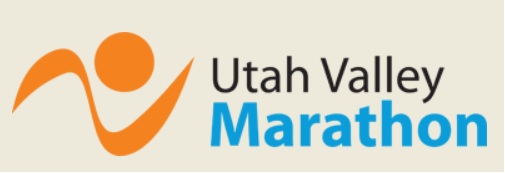
It would be another year until my next road race, a return to the Freedom 10K where I broke my PR, finishing in 44:45, 83rd out of 904 runners. Despite getting older, I was still getting faster. In 2008, I won my age group at the Rex Lee 10K at BYU with another PR 44:12. I also tried another marathon on a whim, the inaugural, Utah Valley marathon. It had just been two weeks since I had won the 2007 Moab 100, but I wanted a fast training run. I cramped up at mile 22 and had to walk much of the final miles but still finished in a PR of 3:34. My interest was piqued. I started to wonder how well I could do if I really tried to train a little for roads.
On the Internet, I joined a site called fastrunningblog.com which included many local road runners. (My training blog is at http://crockett.fastrunningblog.com.) I started using that site to blog the details of my training and to keep track of my running miles. It was a nice way to motivate me to increase my monthly miles. For a couple years, I was the only ultrarunner on the site and so was an odd ball to the others who were curious about the type of running I did. I posted my race reports both on roads and trails and made many new friends, some who even started to try ultrarunning. On many weeks and months I had the top number of miles run among all those on the blog site.
But I also noticed a strange attitude among some of the elites. One guy, who hosted the site actually stated that ultrarunning was not true running and he tried to discourage others from doing it. He called it bushwhacking. He believed that only Olympic-style track running or marathon running was true running. I had some nice debates with him. But I did open the eyes of many other runners to the possibilities of getting off the roads and stop chasing what I call, “marathon minutes.” I had learned long ago that if my running motivation was to only decrease minutes for a distance, that I would eventually get burned out. I noticed that this was happening among these runners who would come away very discouraged from a race if they didn’t meet their time goal. On the other hand, I continued to experience great joy running my ultras on the trails with whatever time I finished in.
After I turned 50 in 2008, I was now in an older age group for these road races. Even though I was running far more 100-mile races that year, I also knew that I could probably place very well in my new age group in the short races. Sure enough, I would show up to 5Ks or 10Ks and usually come home with a blue ribbon. Once, I went up to Logan to run the 1st Dam 10K. I won my age group and afterwards a couple of local guys came up wondering who the guy was that took away the victory ribbon that they had counted on one of them winning. In fun, they accused me of coming up to Logan just to steal away the victory. All this was great for the ego, especially since I had just finished a 100-miler a couple weeks earlier.
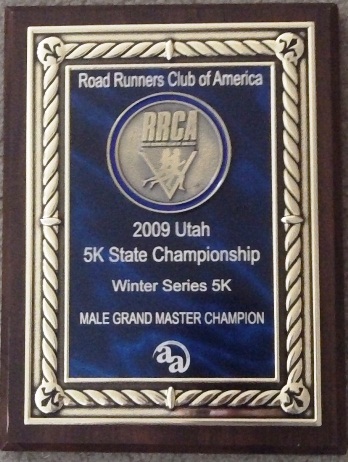
The 5K at the 2009 Salt Lake Track Club Winter Series was the Road Runners of America Utah State Championships. I finished with a PR of 20:23, in 31st place out of 210 runners and was the Utah State Grand Masters 5K Champion. I still chuckle about that one and admire the plaque I received.

That year I also was the Grand Masters champion in the 100-mile National Championship at Tahoe Rim 100, finishing in 25:43, receiving a bunch of awards. So that year for the 50+ age group I was both the state champion for the 5K and the national champion for 100-miles. That crazy combination of awards was pleasing to me, considering that as a youth I couldn’t win anything.
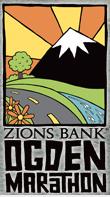
Feeling more confident on the roads, it was again time to try to run a marathon, and to take it a little more seriously. I entered the 2009 Ogden Marathon and prepared for it by doing some tempo run training. I discovered that this type of training transferred very well to improving my 100-mile foot speed. I finished well, in 3:24:49, a Boston qualifying time. My brother, Bob, also qualified for Boston and running it was on his bucket list, so we decided to go out and run it in 2010.
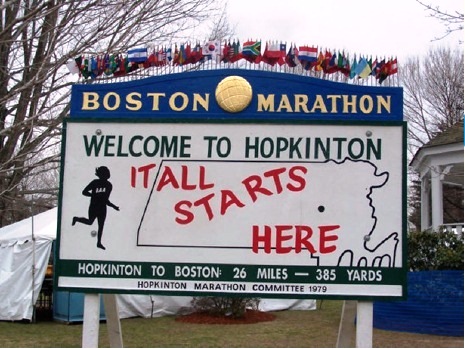
Running Boston was quite the experience, truly an urban adventure run. To salute my ultramarthon roots, I ran with my gaiters. I was in the first wave of 14,000 runners, toward the back and Bob was in the second wave of another 10,000 runners. The crowds were amazing. It wasn’t my kind of race, but certainly the spectacle was something I enjoyed experiencing.

When the race started, it took me about 10 minutes to make it over the start line. We first walked slowing but eventually I was able to find room to run. I soon discovered that if I ran far to the left, there was sort of a passing lane if I jumped off the road and ran on a shoulder of grass or dirt. I could really accelerate on the dirt. The only problem with running there, is that other runners immediately started tossing clothes and other items. Some almost hit me in the face.
Looking ahead, was a sight to see! I had never seen anything like it, nor will I probably see it again. There was a massive sea of thousands of runners totally filling the road far ahead, moving and bouncing. I noticed another runner taking the dirt route and when I passed him, he asked me if I was an ultrarunner. He was Roger, with a full beard, from Colorado and had run Leadville, Wasatch, and others races I had run. I introduced myself and he was excited to meet me because he was a faithful reader of my blog.
My pace was good. Mile one pace was 6:53 (amazing considering the huge crowd), Mile 2 and 3 was about 6:51 each. I reached the 5K mark at 21:11 — A nice fast start. I looked around at the bibs and I was now running mostly with 8-9000 range bibs. I had started with the 10,000 range bibs. I didn’t see any other bibs near my range. It was still very packed on the two-lane road. A girl running behind me clipped my heel and she fell down. I felt very bad, but she said she was Ok. I hoped her race wasn’t ruined.
I was about the only one who carried a hand-held water bottle, but it helped me bypass several of the aid stations. Runners would slow down and I would try to stay in the center, but then would have to hop over tons of cups. It was almost like a river crossing at some of those stations, as Gatorade and water flowed from runners tossing full cups.
By the 10k mark, I was running in the 6-7000 range bibs. I had probably passed at least 3,000 runners already. I reached 10K at 43:12. Wow! That was only four seconds off my 10K PR. My strategy was to try to get up with the 6000 range bibs, hang with their pace and when I started slowing down, they could help me keep my pace up. By the 10-mile mark, I was pretty much keeping pace with the other runners around me. I saw the same runners over and over again.
Passing runners was still a major chore. At times it required zig-zagging and I knew I was adding additional distance, but I just couldn’t get around them by going straight. It reminding me of the 400+ river crossings I made the previous weekend during a Paria River adventure. My pace had slowed to about 7:30. The village of Natick was fascinating to run through this its huge historic churches. The crowds were still cheering like crazy, more than 100,000 lining the entire course.
As I neared Wellesley College, I could hear a high-pitched roar. This was an all-girl’s college. They were out in force and screaming like crazy. There were dozens of signs asking for kisses from the runners. I wondered how many would stop. The screams became so intense that I had to plug in my ear phones tighter to try to drain out the roar with my music.
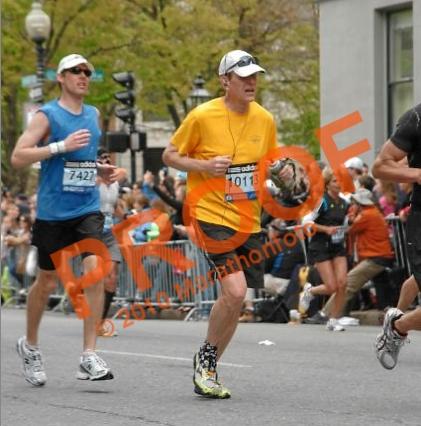
Miles 20 and 21 were the “big” climbs including up Heartbreak hill. My miles slowed way down to about 8:53. From there, I just tried to hang on. The noise was now deafening. Sometimes I enjoyed hearing the roar, but other times I kicked in the music and even sang out loud, trying to find a faster rhythm. I was now in the city of Boston. I knew the finish was getting closer and closer. Hang on! Hang on! I was passing runner after runner, some moving pretty slowly. But I really wasn’t running very fast any more at about an 8:30 pace. After the final corner, the finish line came into view. I again looked at my watch and did my best version of a “sprint.” The crowd roared. I removed the ear phones to soak up the experience.
Finally the finish line arrived. I finished the Boston Marathon in 3:24:15. I had broken my PR by 34 seconds. I certainly didn’t crush it, but I was pleased how I did it on a tougher course, dodging thousands along the way. I had finished in 5357th place so I must have passed nearly 5,000 very talented runners along the way. I also finished in 345th place in my age group (1,894 starters). I came in 39th place among all the runners from Utah (242 starters). My half marathon pace was at a speedy 7:11 pace, but my second half marathon was a slow 8:40 pace. I knew I could do better.

Bob finished in 3:57:51. Oddly, I was full of energy at the finish. I had never cramped up. As I tested my legs, they were hardly sore at all. I wasn’t walking funny like most of the other runners. Running the Boston marathon was truly an experience of a lifetime, one that everyone should try to experience at least once. The hype, the history, the crowds, the noise, the competition, all makes it amazing. Will I run it again? Perhaps, but as of 2014 I haven’t been back and lost interest in marathons. I left Boson with a smile on my face, energized by the experience, and ready to hit the trails again.
A month later I ran the Ogden Marathon again and lowered my PR to 3:23:43, but I knew I could break 3:15 if I really was serious about training. Doing some research for my age group, it looked like I was in the top-20 in the state for those that ran a few marathons each year. I wondered how fast I could have run when I was much younger. A friend told me that a local marathoner who trained very hard and ran many marathons, who was quite a bit younger than me, was somewhat frustrated by my marathon accomplishments. I wouldn’t train seriously for them, would just go and run them, yet would do quite a bit better than him. I couldn’t explain it either.
In 2011 I tried to be more serious about marathon training, ran Ogden again, but really struggled in the heat, and finished in 3:29:29. It was painful and I didn’t have fun. I was through with marathons and haven’t run any since then (as of 2014).
However, I felt that the half-marathon distance was a good short distance for me. I could run that distance pretty fast without crashing. In 2010 I set the Utah Valley Half Marathon course record for my age group, in 1:30:14. It was pretty cool seeing my name printed in the next year’s program. In 2011, I really wanted to break 1:30 on the course. While waiting for the start for an hour, I ran in the dark up on the trails in Provo Canyon away from the crowds. I then came down just in time to start and finished in 1:29:13. I was very pleased and got some great complements from runners around me who I helped motivate to finish fast. I finished 2nd in my age group, but was only beat by one of the fastest runners in the state in my age group.

After that, I generally started to retire from my dabbling in road running. As I continued to try to run very fast, with increased age, I started to pull muscles more often. It just wasn’t worth it. 2010-11 was my best year for PRs. I ran a 5K in 19:51, a 10K in 42:05, half marathon in 1:29:13, marathon in 3:23:43, 50K in 4:38, 50-miles in 8:07, 100K in 10:49, and 100-miles in 19:40. To cap it all off, I was the overall winner at Across the Years 48-hour, running 187 miles.
Clearly during those years, all the tempo training and all the shorter road races helped increase my foot speed and greatly improved my ultramarathon performance.

